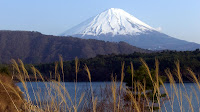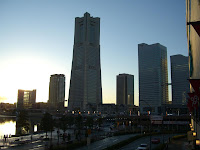Source and photos:
http://horizons.free.fr/seikatsu/eng/memories/2007-09_jp-tokyo_wakita-expo.htm
I attended a fashion exhibition entitled
情報の官能 (The Senses of Information) in
東京 (Tokyo, Japan) on 09 September 2007 in company of 倫太朗 (Rintaro) to see artistic prototypes of smart clothes. This first exhibition of textiles and garments by
脇田研究室 (Wakita laboratory) featured binary ("0"s and "1"s)-based compositions, tools and artistic works such as color-changing dresses exploiting the
Fabcell technology and the
Wearable Synthesis concept.
脇田玲 (WAKITA Akira) founded the laboratory at
慶應義塾大学 (Keio university) in 2004 to investigate the future of information design; it is thus involved in fashion, communication and interactions.
Fabcell is a square textile invented in 2006 by
渋谷みどり (SHIBUTANI Midori), woven from flexible non-emissive yarns connected to electronic components, which color varies with temperature. There, the exhibited dress turned from green to red in a few minutes when electric current was applied to its conductive yarns. This technology is potentially useful for fashion or to inform about e.g. a wearer's emotions. However it is not yet ready for use in everyday life because the strong voltages used to quickly change the color are dangerous, the textile resists badly to washing, and small cells are still difficult to create.
The
Wearable Synthesis concept defines clothes and accessories as modules with both input (e.g. temperature sensor) and output (e.g. colored lights) that communicate to generate various effects. For example, a dress may change its color according to other worn items, or to the presence of a friend. Such a model was exhibited but out of order when I went by.














